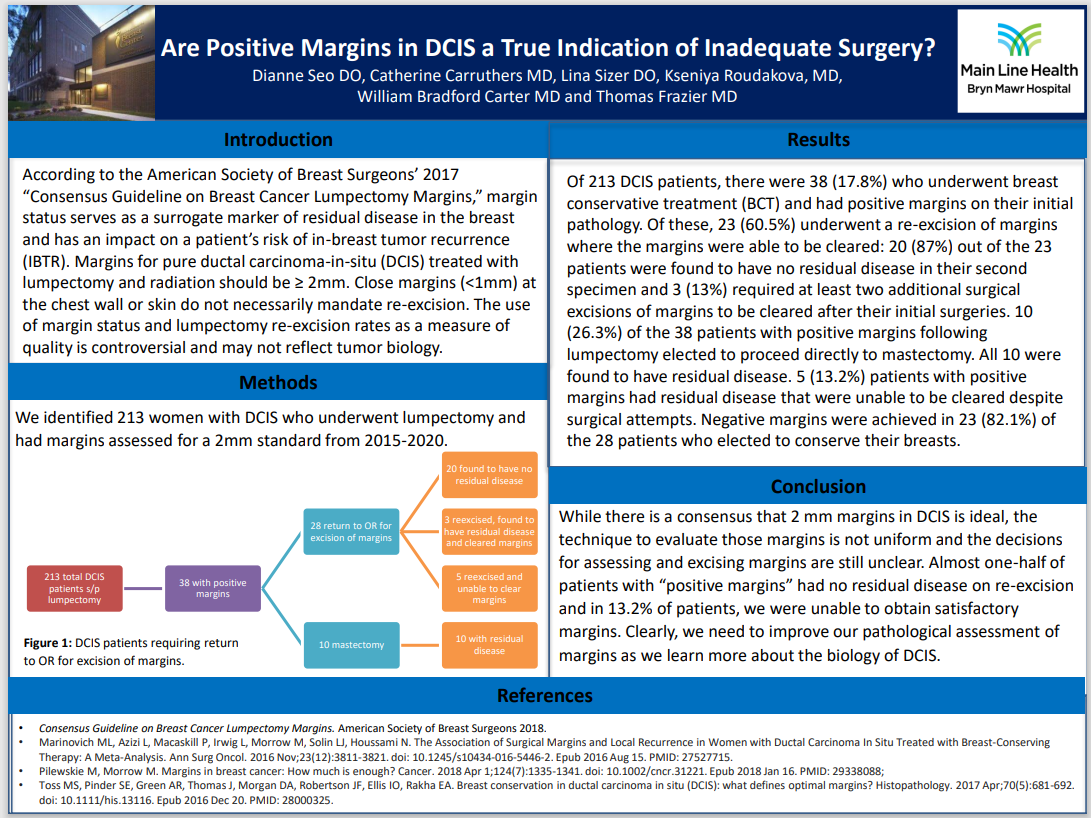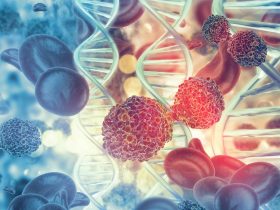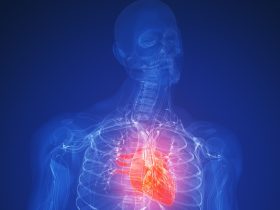Poster: Are Positive Margins in DCIS a True Indication of Inadequate Surgery?
Authors: Dianne Seo, DO; Catherine Carruthers, MD; Lina Sizer, DO; Kseniya Roudakova, MD; William Bradford Carter, MD; and Thomas Frazier, MD
The American Society of Breast Surgeons’ 2017 “Consensus Guideline on Breast Cancer Lumpectomy Margins” tells us that margin status can serve as a surrogate marker of residual disease and suggests the patient’s risk of in-breast tumor recurrence (IBTR). Yet, the use of margin status and lumpectomy re-excision rates as measures of quality are controversial and may not adequately reflect tumor biology.
The researchers set out to examine the value of positive margins in DCIS as an indicator of the quality of the surgery via an assessment of the cases of 213 women with DCIS who underwent lumpectomies and had margins assessed for a 2mm standard from 2015 to 2020 at Main Line Health’s Bryn Mawr Hospital, Bryn Mawr, PA.
Of the total 213 women, 38 had positive margins. Of those 38, 28 returned to the OR for excision of the margins while 10 underwent mastectomy.
While all 10 of the mastectomy patients were subsequently found to have residual disease. The 28 patients who returned to the OR for excision of margins diverged in terms of their results:
- 20 were found to have no residual disease
- 3 reexcised were found to have residual disease and cleared margins
- 5 reexcised and unable to clear margins
Negative margins were then achieved in 23 of the 28 patients who opted to conserve their breasts.
In summary, almost half of patients with supposed “positive margins” had no residual disease on reexcision. although there is agreement that 2mm margins in DCIS is ideal, the margins are not evaluated in a uniform fashion. In addition, the decision-making process remains unclear. And, in 13.2%, satisfactory margins could not be obtained.
As the authors concluded, “Clearly we need to improve our pathological assessment of margins as we learn more about the biology of DCIS.”






